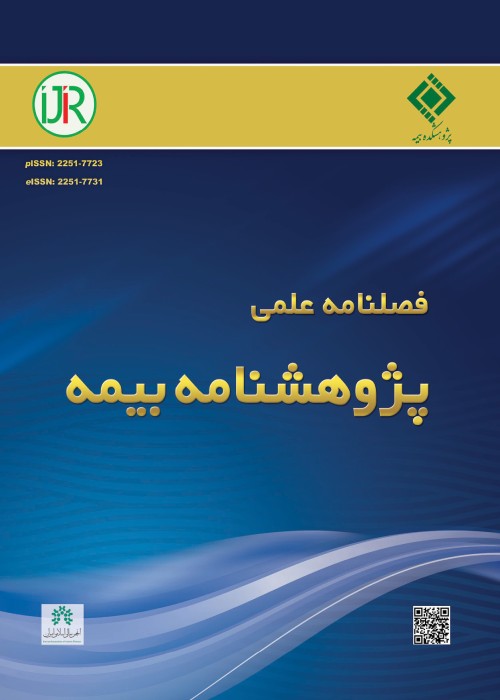Identifying customers' risk in auto insurance and calculating distorted insurance premiums
Determining the fair insurance premium and proportional to the amount of risk requires full disclosure of the facts about the risk that is insured. Most of the time, it is difficult to access such complete information, in such a situation, the use of past information, including the claimed damages, can be used as a suitable measure to identify the level of risk. In this research, by using the past years’ losses, customers are divided into two categories of low-risk and high- risk insurers, and then via applying of Lindley’s log distortion function, an appropriate insurance premium is introduced, which is called a distorted insurance premium.
In this research, in addition to statistical simulation, real damage data is used for calculations. First, by using R software, four types of distribution: Bohr, Weibull, Gamma and Pareto were simulated with approximately 10,000 data from each, and then the results of the theorems were evaluated. Then, with the help of about 35,000 observations related to losses claimed by an insurance company, the results were evaluated and analyzed in the form of a case study.
According to the claimed modeling, Burr heavy tail distribution is accepted as the final distribution. With the help of the Hill estimator and the value at risk of the 90th percentile of this distribution, the amount of the damage threshold is estimated as 19,800,000 Rials. Therefore, 10% of the insurance policyholders cause a loss of more than 19,800,000 Rials to the company every year and increase the loss factor and the basic insurance premium of all people. The classification of low-risk and high-risk people and the use of log Lindley distortion function allows, in addition to observing the principles of optimality (positive homogeneity, non-extremity, collective uniformity and non-negative overhead), the calculated insurance premium for each class is proportional to be a risk.
If low-risk and high-risk customers are not separated, the amount of insurance premium for all members of society is the same and equal to 17,012,700 Rials. This amount will be a large amount for people with low risk or people without damage, so after classifying customers and recalculating the insurance premium for low risk and high risk people, it will be calculated as 5,610,700 and 54,295,700 Rials respectively. The big difference between the insurance premiums of the two classes shows the big difference in the amount of risk. Therefore, in the end, the importance of classifying the society of insurance policyholders is an essential issue. There is no limit in using this method and when the distribution of damages is heavy, using this method can be very useful and efficien.
- حق عضویت دریافتی صرف حمایت از نشریات عضو و نگهداری، تکمیل و توسعه مگیران میشود.
- پرداخت حق اشتراک و دانلود مقالات اجازه بازنشر آن در سایر رسانههای چاپی و دیجیتال را به کاربر نمیدهد.


